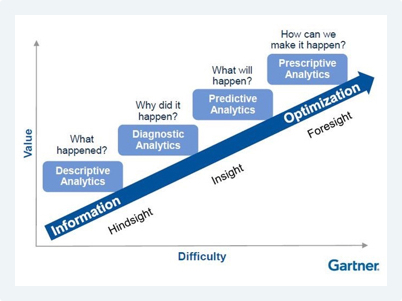The cloud has become the primary location to store data over the last few years. Many have even moved their apps to cloud platforms. The trend will continue in the coming years. Businesses will not want to be locked into a single cloud vendor due to regulations like GDPR and the need for localized data.
Fast-paced businesses recognize the power of data literacy. The way of thinking is that data is for everyone and at all levels. Apps play a key role in supporting and growing data literacy.
According to a survey, Hanover Research reported that most app teams, 75 percent of them, consider it “very” or “extremely important” to help users get more data literate.
End users, however, are not as data fluent as their app teams might think. The survey showcased that 84% of the latter think that their end users have “high” or “very high” levels of data fluency. The reality is that the data literacy levels of end users are quite the opposite.
In addition, application teams are of the mindset that their apps support higher levels of data literacy than they, in fact, show to do. According to the Hanover survey, 86 percent of app teams think that their apps support data-fluent end users. Survey results reveal a different reality where only 15 percent of apps have the capabilities to support data-fluent end users.
This finding means that most app teams are unaware of their app’s failings. Until they recognize that there are gaps, low adoption rates will continue to be an issue. The investment in personalized analytics is key for future business success.

Over time, analytics grow and level up. Leading research and consultancy company, Gartner describes the path that businesses take as they move to higher levels:
Most companies that deploy BI and analytics lean to the left side of this model. In the same way, embedded analytics lean towards the descriptive and diagnostic.
Predictive analytics use a combination of data sets from multiple sources to find relationships and correlations. It develops the following to more accurately predict future probabilities of a given outcome:
Companies collect lots of data, but tasking a human to sift through it in search of actionable information often isn’t practical. Instead, software can be used.
Augmented analytics use machine learning and AI to aid with data insight and analysis to improve workers’ ability to analyze data. This is generally okay, but there are still outstanding moral and even potentially legal issues that have yet to be addressed as we look more and more at software to help us make decisions.
Interest in predictive analytics continues to grow. Large-scale adoption is expected at some point, but it is the most difficult to launch. The BI industry has nearly given up on predictive analytics. In its current state, predictive analytics puts numbers in front of people without telling them what it means. It’s just a prediction about the future. With augmented analytics, you start with a key takeaway before diving into the numbers, rather than the flip side. In the future, the value of augmented will outweigh that of predictive.
It is believed that UX will push innovation within apps. Apps need to be configured for greater access across the board, not just DevOps and IT.
In the short term, we will see better user design within dashboards. This will allow for greater adoption rates of decision-makers. The app has become more than a tool. It’s the way to task.
Whether it’s understanding the data behind a campaign, diagnosing an issue, or taking action, the feedback loop is constant. In the conversation of embedded analytics vs. traditional BI, many businesses prefer how the former allows for tasking with efficiency and remaining in the app. We expect to see all-around adoption of embedded analytics as traditional BI ages out.
BI has evolved greatly in the past decade. With the advancements in analytics, the need for more, better, quicker has increased in tandem. These are some of the reasons that embedded analytics have morphed from a “want” to a “need.”
To provide the optimal UX, consumer and business apps need to ramp up their analytics. Razor’s focus on user needs is an imperative. To be competitive in the marketplace, the provisioning of such capabilities is a 100% must-have. The concept that “everybody’s doing it” should be noted as the truth here.
For the businesses that are reluctant to adapt, the case for leveling up is a strong one. The numbers speak for themselves. Remember that roll-out can be phased. New and inventive doesn’t have to take place overnight.
Embedded analytics is widespread. It is a requirement for both internal and external clients, users, and stakeholders. Undoubtedly, innovation will make your app that much more valuable to your end users. There is plenty of data that demonstrates this point.
The future is exceedingly bright for the industry. Application providers continue to upgrade their toolsets. Self-service functionality and analytics capabilities revolutionize with each passing day. With a focus on the users and technical tweaks to support them, your app will delight everyone that touches it. And in the end, isn’t that what it’s all about?